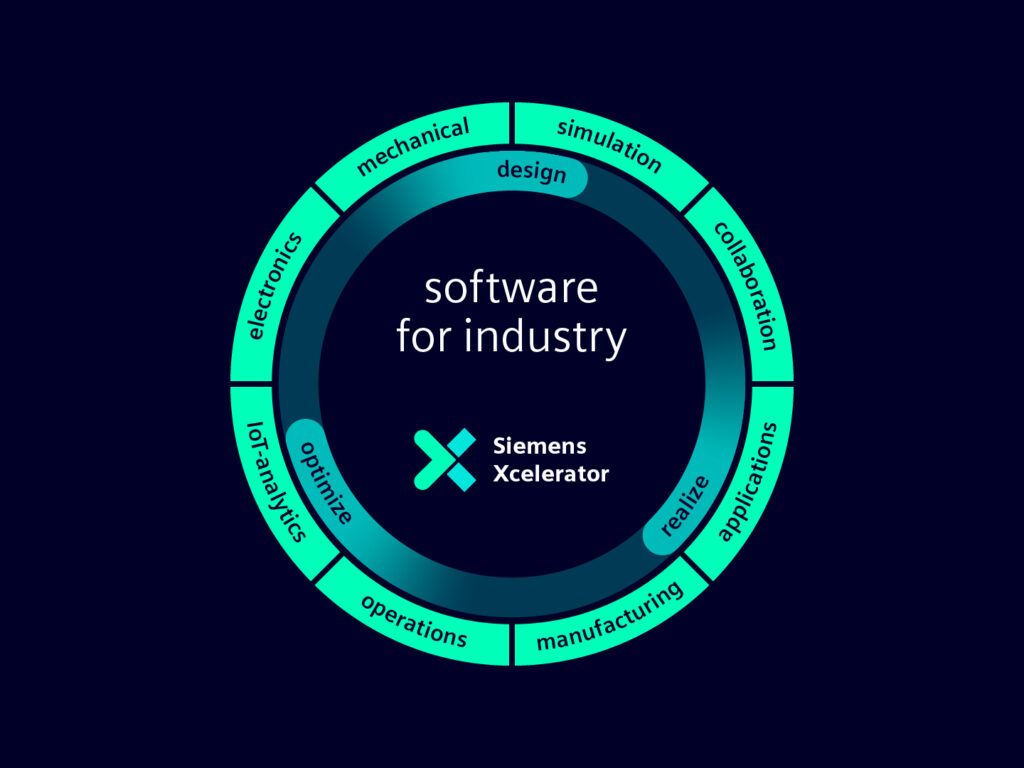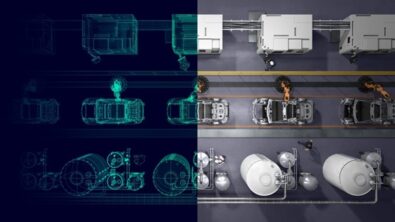What will it take for people to accept digitalization and its benefits?

- Small, incremental changes go far
- Extend currently used technology to the next level
- Practice makes perfect – let small successes lead the way to bigger adoption
What do reluctance in boarding a pilotless plane or riding in a driverless vehicle and the digital twin have in common? From the everyday individual to engineers, people are often hesitant to accept and adopt new technology in their personal lives or at work. In organizations, this reluctance can be seen in the rate of adoption of a comprehensive digital twin. Because we are seemingly wired to resist change, how do we increase the cultural acceptance of technology like digital twin?
A digital twin is a virtual representation of a product, process or plant. It allows companies to test, simulate, verify and optimize virtually — all before building them physically. When used throughout the product lifecycle, the digital twin has proven to reduce engineers’ reliance on physical prototypes and to help cut costs and time.
Even with all these technological advancements and virtual prototype capabilities, there are still factors preventing the comprehensive digital twin from replacing physical prototypes entirely. One of the issues is the slow growth of cultural acceptance of digitalization within an organization.
Simply put, companies, engineers and the public don’t have full faith in technologies to accept the digital world’s reliability over the physical world.
In an organization, this may be due to a company’s inability to shake its legacy systems or they don’t see the long-term benefit versus the short-term investment. Other times it’s an individual’s reluctance: if there is the fear of AI systems piloting passenger aircraft or driving in an autonomous vehicle across a busy freeway, then there may also be resistance to relying on digitalization at work.
How do you build technological acceptance?

The innovation adoption curve explains how people accept change and illustrates who gains confidence in the benefits of technological change. The curve goes from the early adopters, the first groups to accept and use new technology, to the laggards who are among the last, or who may totally refuse new technology.
We must remember that in the U.S. alone, there are approximately 25 million people who have a fear of flying in commercial aircraft. How many more currently resist designing vehicles in the digital realm, or traveling in autonomous vehicles?
Therefore, while an increasing number of people and companies accept digitalization in some form, it will take proof of its capabilities before public confidence in autonomous vehicles and aircraft designed in a digital environment is achieved. It likely won’t be until the early majority and the beginnings of the late majority (the middle two-thirds in the innovation adoption curve) are comfortable in stepping into AI-driven transportation before we reach cultural acceptance.
How can you prove digitalization is reliable?
According to Chad Jackson of Lifecycle Insights, companies don’t have to embrace all digitalization initiatives at once. Small, incremental changes can wear down the hesitancy toward new technology.
It’s similar to acceptance of autonomous features in modern vehicles. Most people won’t put their trust into an autonomous vehicle but they are comfortable with new driver assist features such as autonomous parking features and adaptive cruise control. These features help make people aware of and feel secure in technological advances.
Increasing confidence in the comprehensive digital twin’s ability to replace physical prototypes would involve engineers, program leaders, and regulatory agencies working with the technology and building up to a comfort level in which a digital twin becomes the prototype.
Many of today’s engineers already build a digital twin to model what they expect from physical hardware then they build and test a physical prototype consisting of the modeled hardware. They collect the data from their tests to validate their digital twin. However, this process verifies the physical piece, not the digital twin.
When companies see the truth in the digital twin first, and replace physical prototypes, the need for validation testing with physical hardware altogether will become redundant.
And just like these teams will see the advantages and unlimited potential of digitalization, the cultural shift will turn toward acceptance.
Siemens Xcelerator software for industry: A digitalization approach

Siemens Xcelerator software for industry, a portfolio of best-in-class software and services, provides unprecedented opportunities for companies to innovate. It offers the flexibility to scale as needed and provides users with integrated software to collaborate more effectively.
The comprehensive digital twin is at the heart of Siemens Xcelerator. By combining the real and digital worlds, engineers and innovators can continually validate and optimize their products and processes with real-time data from physical operations and enable the modeling and validation of increasingly complex systems before they are built.
Learn more about the comprehensive digital twin.
Parts of this blog were taken from Reducing the need for physical prototypes with the digital twin in A&D.

